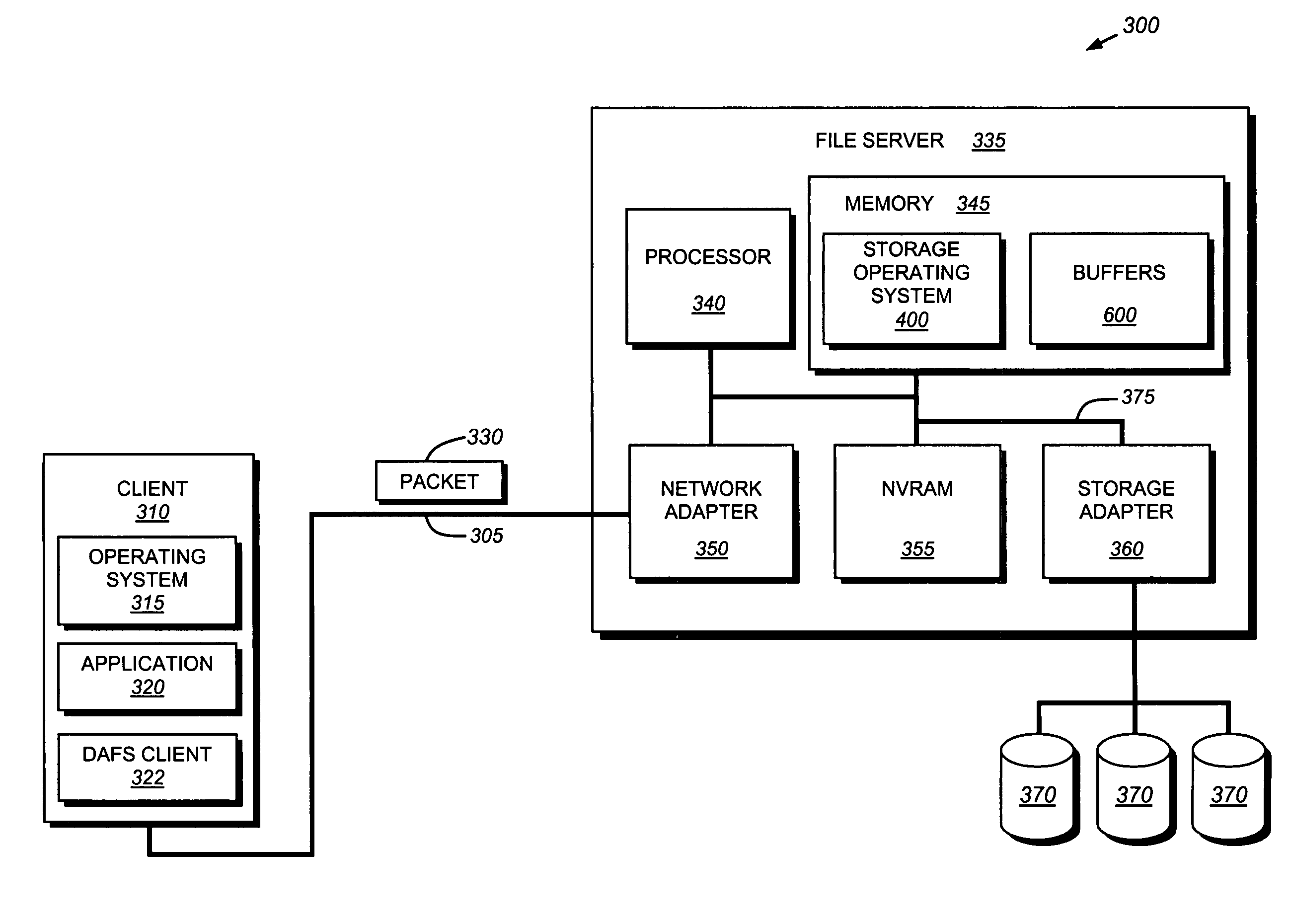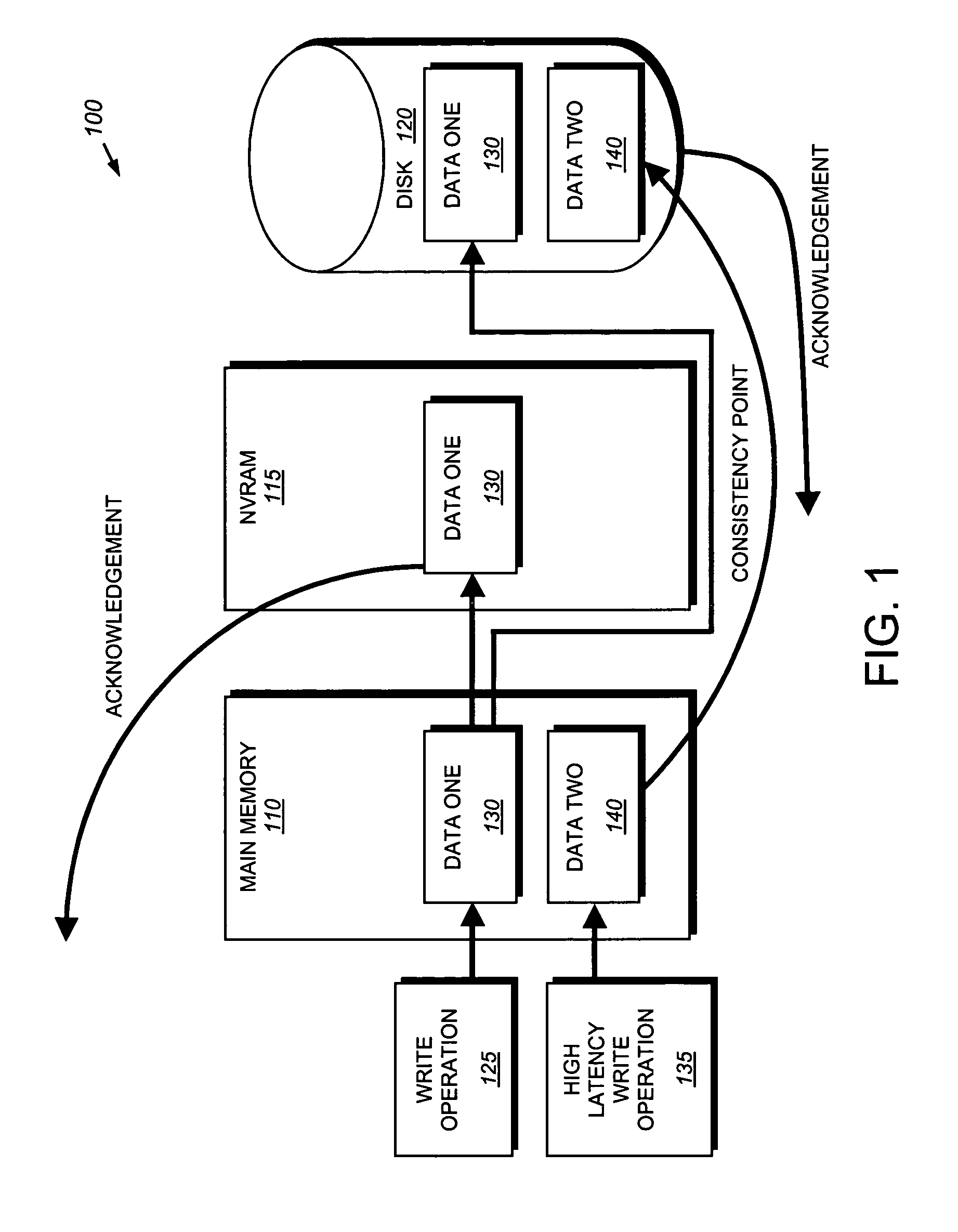System and method for reprioritizing high-latency input/output operations
a high-latency input/output operation and priority technology, applied in the field of file system operations, can solve the problems of affecting the processing speed of the file server, affecting the processing speed of the input/output, and consuming resources. , to achieve the effect of reducing the latency of the request, modifying the latency of the command, and increasing or decreasing the outstanding latency of the input/outpu
- Summary
- Abstract
- Description
- Claims
- Application Information
AI Technical Summary
Benefits of technology
Problems solved by technology
Method used
Image
Examples
Embodiment Construction
A. Storage System Environment
[0025]FIG. 3 is a schematic block diagram of a storage system environment 300 that includes a plurality of clients 310 having an operating system 315 and one or more applications 320, a Direct Access File System (DAFS) client 325 and an interconnected file server 335 that may be advantageously used with the present invention. The filer server or “filer”335 is a computer that provides file service relating to the organization of information on storage devices, such as disks 370. It will be understood to those skilled in the art that the inventive technique described herein may apply to any type of special-purpose computer (e.g., server) or general-purpose computer, including a standalone computer. The filer 335 comprises a processor 340, a memory 345, a network adapter 350 and a storage adapter 360 interconnected by a system bus 375. The filer 335 also includes a storage operating system 400 located in memory 345 that implements a file system to logically...
PUM
 Login to View More
Login to View More Abstract
Description
Claims
Application Information
 Login to View More
Login to View More - R&D
- Intellectual Property
- Life Sciences
- Materials
- Tech Scout
- Unparalleled Data Quality
- Higher Quality Content
- 60% Fewer Hallucinations
Browse by: Latest US Patents, China's latest patents, Technical Efficacy Thesaurus, Application Domain, Technology Topic, Popular Technical Reports.
© 2025 PatSnap. All rights reserved.Legal|Privacy policy|Modern Slavery Act Transparency Statement|Sitemap|About US| Contact US: help@patsnap.com



